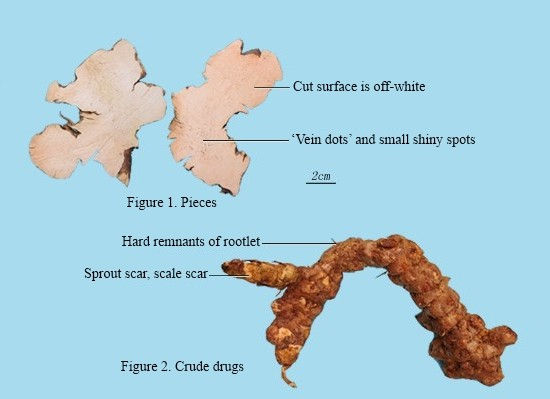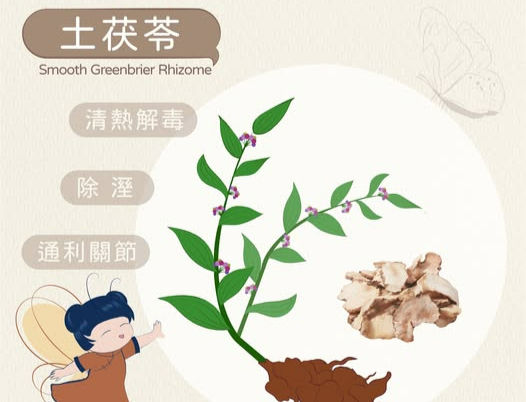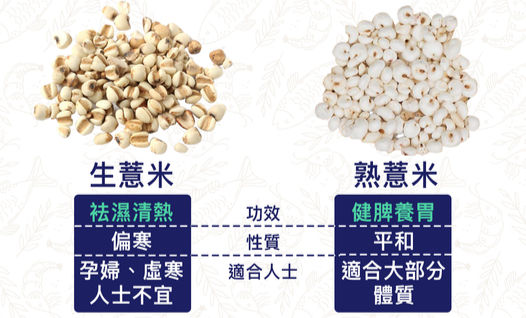Tu Fu Ling: The TCM Herb for Detoxification and Joint Relief
- Hongji Medical

- Jun 9
- 3 min read
Tu Fu Ling, also known as Smilax glabra or China Root, is a widely used herb in Traditional Chinese Medicine (TCM) valued for its ability to detoxify, remove dampness, and relieve joint pain.
It is particularly effective for conditions like syphilis, eczema, and sores. Its medicinal use was first recorded in the Diannan Bencao (Yunnan Materia Medica), marking its long history of therapeutic application.
Ancient texts like the Bencao Gangmu Shiyi (Compendium of Materia Medica Supplement) noted its benefits for strengthening the spleen, invigorating muscles and bones, and treating syphilis and joint pain. The Bencao Zhengyi emphasized its detoxifying properties and ability to improve joint mobility, while the Lingnan Caiyao Lu highlighted its role in relieving damp-heat and skin conditions. These records establish Tu Fu Ling as a key remedy for detoxification and joint health.

Properties of Tu Fu Ling
Nature and Channels
Taste: Sweet, bland
Nature: Neutral
Channels: Liver, Stomach
Main Benefits
Detoxifies the body
Removes dampness
Improves joint mobility
Dosage
Internal use: 15–30 grams, boiled in decoctions; up to 60 grams for severe conditions.
Growing Regions
Found in southern China, including Guangdong, Guangxi, Fujian, Yunnan, and Sichuan.
Identification
Shape: Irregular blocks, 5–22 cm long, 3–10 cm in diameter.
Color: Brownish to dark brown, rough with irregular wrinkles and lenticel-like protrusions.
Texture: Hard, difficult to break, with a granular, pale reddish-brown or grayish-brown cross-section.
Scent and Taste: Mild scent, bland taste.

Clinical Uses of Tu Fu Ling
Tu Fu Ling is used in TCM to treat various conditions:
Syphilis: It can be used alone or with other herbs to manage syphilis and its symptoms.
Damp-Heat Sores: It relieves red, itchy, and oozing skin conditions.
Eczema: It reduces itching and fluid seepage caused by eczema.
Joint Pain: It eases swelling, pain, and restricted movement in joints.
Urinary Turbidity (Lin Syndrome): It addresses frequent, painful, or dribbling urination due to damp-heat.

Specific Benefits
Detoxification: Tu Fu Ling inhibits syphilis spirochetes and reduces toxin-related symptoms.
Removing Dampness: It clears damp-heat, helping with skin conditions like eczema and sores.
Improving Joint Mobility: It relieves joint pain and stiffness, enhancing movement.
Tu Fu Ling in TCM Formulas
Tu Fu Ling is often combined with other herbs in TCM formulas to enhance its effects. Here are some examples:
Jie Du Tang (Detoxification Decoction): Combines Tu Fu Ling with Honeysuckle, Forsythia, and Dandelion to boost heat-clearing and detoxifying effects, used for toxic sores.
Chu Shi Tang (Remove Dampness Decoction): Includes Tu Fu Ling with Coix Seed, Red Bean, and Alisma to enhance dampness removal, treating eczema and edema.
Bi Xie Fen Qing Yin (Dioscorea Clear Turbidity Decoction): Pairs Tu Fu Ling with Dioscorea, Acorus, Alpinia, and Lindera to clear dampness and warm the kidneys, used for urinary turbidity or excessive vaginal discharge.
Comparison with Similar Herbs
Tu Fu Ling shares effects with other TCM herbs but has unique strengths:
Dioscorea (Bi Xie): Clears dampness and relieves joint pain but is less effective for detoxification and more focused on urinary issues.
Coix Seed (Yi Yi Ren): Removes dampness and strengthens the spleen but is better for edema and diarrhea, with weaker detoxifying effects.
Honeysuckle (Jin Yin Hua): Clears heat and detoxifies but is stronger for throat infections and sores, with less focus on dampness.
Tu Fu Ling stands out for its combined detoxification, dampness removal, and joint-relieving properties, especially for syphilis.
Modern Applications and Research
Modern research highlights Tu Fu Ling’s benefits:
Anti-Syphilis Effects: Its extracts inhibit syphilis spirochetes.
Diuretic Effects: It promotes water excretion, reducing fluid retention.
Anti-Inflammatory: It reduces inflammation by suppressing inflammatory mediators.
Immune Support: It enhances the body’s immune response.
Clinically, Tu Fu Ling is used for syphilis, eczema, arthritis, and urinary tract infections, with promising results.
How to Use Tu Fu Ling Safely
Precautions
Liver and Kidney Yin Deficiency: Use cautiously, as long-term or high-dose use may deplete yin.
Avoid with Tea: Tea’s tannins may reduce Tu Fu Ling’s effectiveness.
Usage Tips
Tu Fu Ling is typically boiled in decoctions, with higher doses (up to 60 grams) for severe cases. Consult a TCM practitioner for proper dosage and suitability.
Conclusion
Tu Fu Ling is a versatile TCM herb known for detoxifying, removing dampness, and relieving joint pain. It effectively treats syphilis, eczema, sores, and joint issues, with modern research supporting its anti-syphilis, diuretic, and anti-inflammatory effects. To ensure safe and effective use, consult a TCM practitioner for guidance on dosage and application.




